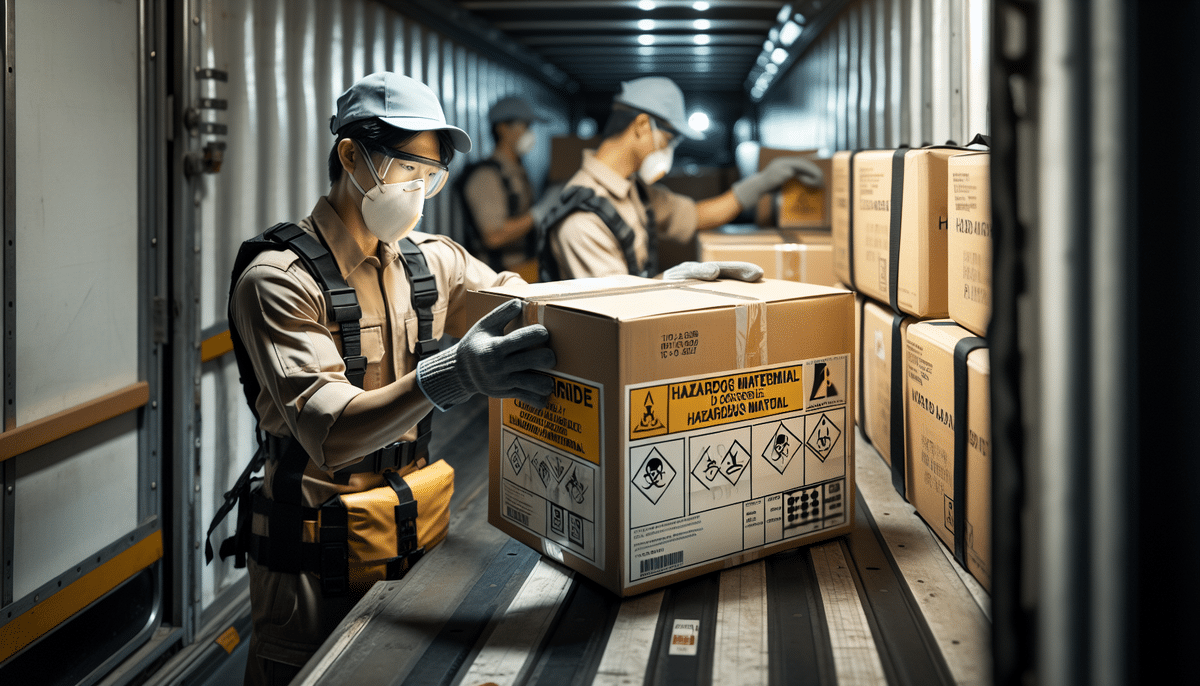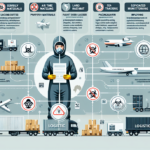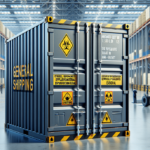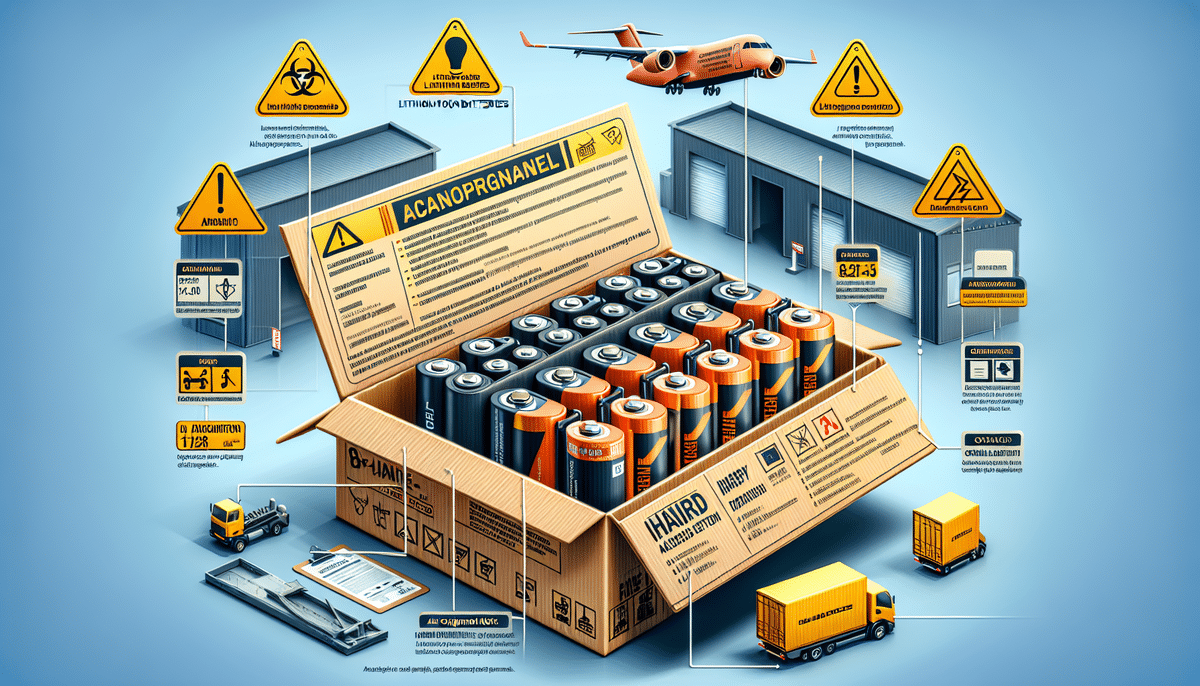FedEx Provides Guidelines for Shipping Hazardous Materials and Dangerous Goods
Shipping hazardous materials and dangerous goods is a complex process that demands meticulous planning and strict adherence to regulations. FedEx has established comprehensive guidelines to assist shippers, handlers, and carriers in complying with federal regulations, ensuring the safe and efficient transportation of these sensitive materials.
Understanding Hazardous Materials and Dangerous Goods
Hazardous materials and dangerous goods refer to substances that pose significant risks to health, safety, or property during transportation. These include, but are not limited to, chemicals, batteries, explosives, and radioactive materials.
Proper identification of these materials is crucial, as they necessitate specialized handling and shipping procedures. Incorrect handling can lead to severe environmental and public health impacts, such as soil and water contamination, air pollution, and harm to wildlife and ecosystems.
Adhering to established regulations and guidelines is essential to minimize these risks and ensure the responsible transportation and disposal of hazardous materials.
Why Proper Handling of Hazardous Materials and Dangerous Goods is Critical
Improper handling of hazardous materials can result in dire consequences, including personal injuries, environmental degradation, and substantial regulatory fines. Ensuring compliance with all relevant regulations and guidelines is paramount for the safe transport of these materials.
The primary concern is the potential harm these materials can inflict on human health. Exposure can lead to respiratory issues, skin irritation, and even long-term conditions like cancer. Therefore, implementing rigorous safety measures protects both workers and the general public.
Environmental impacts are equally concerning. Hazardous materials can contaminate soil, water sources, and air, causing lasting damage to ecosystems and wildlife. Proper handling procedures are vital to prevent such occurrences and maintain environmental integrity.
Federal Regulations for Shipping Hazardous Materials and Dangerous Goods
The Department of Transportation (DOT) oversees federal regulations governing the transportation of hazardous materials and dangerous goods. These regulations encompass classification, packaging, labeling, and documentation requirements.
Compliance with DOT regulations ensures the safety of all parties involved in the transportation process. Non-compliance can lead to severe penalties, including hefty fines and legal repercussions.
Beyond federal regulations, shippers must also be cognizant of state and local regulations that may impose additional requirements on the transportation of hazardous materials.
Different Types of Hazardous Materials and Dangerous Goods
Hazardous materials are categorized based on their properties and the specific hazards they present. Common classifications include:
- Explosives
- Flammable liquids and gases
- Poisonous or infectious substances
- Radioactive materials
Other categories include corrosive substances like acids and batteries, as well as compressed gases such as propane and oxygen. Additionally, materials that are hazardous due to their physical properties, such as sharp objects or highly combustible substances, require careful labeling and packaging to prevent accidents.
Accurate identification and classification are essential to ensure these materials are handled and transported safely, in accordance with all relevant regulations.
Packaging Requirements for Shipping Hazardous Materials and Dangerous Goods
Proper packaging is a cornerstone of safe hazardous material transportation. Packaging must be robust enough to withstand the specific hazards associated with the material, complying with stringent regulations and guidelines.
Key packaging requirements include:
- Pressure and leak testing
- Clear and compliant labeling and marking
- Use of appropriate materials to contain the hazardous substance
The mode of transportation—whether air, sea, or land—also influences packaging requirements. Each mode has unique demands that must be met to ensure safe transportation.
Employee training is equally important. Personnel involved in packaging hazardous materials must understand the specific regulations, handling procedures, and disposal protocols to maintain safety and compliance.
Labeling and Marking Guidelines for Shipping Hazardous Materials and Dangerous Goods
Accurate labeling and marking are critical for the safe transportation of hazardous materials. Labels must be clear, concise, and comply with specific regulatory standards.
Essential labeling requirements include:
- Hazard labels and placards
- Proper markings indicating the contents
- Handling instructions
Different countries may have varying regulations for labeling and marking. It is imperative to research and adhere to these international standards to avoid legal and safety issues during transportation.
Comprehensive training for personnel involved in handling and transporting hazardous materials is also essential. This training should cover risk assessment, proper handling techniques, and emergency response procedures.
Hazmat Training Requirements for Shippers, Handlers, and Carriers
All individuals involved in the transportation of hazardous materials must undergo specialized training to understand the associated regulations and safety protocols.
Training programs typically cover:
- Proper handling and packaging techniques
- Emergency response procedures
- Regulatory compliance
Training requirements vary based on the transportation mode. For instance, air carriers must adhere to the International Air Transport Association (IATA) Dangerous Goods Regulations, while ground carriers follow DOT regulations.
Regular refresher courses, typically every three years or following significant regulatory changes, are mandatory to ensure ongoing compliance and safety awareness.
How to Prepare Documentation for Shipping Hazardous Materials and Dangerous Goods
Accurate documentation is vital for the lawful and safe transportation of hazardous materials. Key documents include:
- Shipping papers
- Manifests
- Emergency response information
Documentation requirements may vary depending on the specific hazardous material being shipped. Some materials may necessitate additional permits or certifications, which must be included in the shipping documentation.
Shippers bear the responsibility of ensuring all documentation is complete and accurate. Errors or omissions can result in shipment delays, fines, or legal consequences.
Consequences of Non-Compliance with Hazardous Materials Regulations
Failure to comply with hazardous materials regulations can lead to severe repercussions, including:
- Injuries and fatalities
- Environmental damage
- Regulatory fines and penalties
- Legal action
- Reputation damage
Non-compliance not only poses immediate safety risks but can also have long-term effects on a company's financial stability and reputation. Ensuring strict adherence to all regulations is essential to protect both employees and the business.
Best Practices for Ensuring Safe Transportation of Hazardous Materials and Dangerous Goods
Implementing best practices is crucial for the safe and efficient transportation of hazardous materials:
- Properly identifying and classifying materials
- Adhering to all relevant regulations and guidelines
- Using appropriate packaging, labeling, and marking
- Providing comprehensive training to all personnel
- Maintaining accurate and complete documentation
Additional best practices include regular inspection and maintenance of transportation equipment, such as vehicles and containers, to identify and rectify potential issues before they lead to accidents or spills.
Establishing and familiarizing all parties with a contingency plan is also essential. This plan should outline procedures for responding to emergencies like spills or leaks, ensuring a swift and effective response to mitigate damage.
FedEx's Role in Ensuring Safe Transport of Hazardous Materials and Dangerous Goods
FedEx plays a pivotal role in the safe and compliant transport of hazardous materials and dangerous goods through its robust guidelines and specialized services.
FedEx ensures compliance with international regulations, such as the IATA Dangerous Goods Regulations, by training its employees thoroughly. This training ensures that all shipments are handled in accordance with legal standards, maintaining safety and compliance throughout the transportation process.
The company also offers a range of specialized services, including the Dangerous Goods Advisory Service, which provides expert advice on packaging and labeling to meet regulatory requirements. Additionally, FedEx provides specialized packaging solutions, such as temperature-controlled containers, to accommodate sensitive and perishable materials.
Choosing the Right Shipping Service for Your Hazardous Materials and Dangerous Goods
Selecting the appropriate shipping service is critical for the safe and efficient transportation of hazardous materials. FedEx offers customized shipping solutions tailored to meet specific customer needs, ensuring that each shipment complies with all relevant regulations.
FedEx provides expert guidance and support, helping customers navigate the complexities of shipping hazardous materials. Their professional advice ensures that shipments are handled correctly, minimizing risks and ensuring timely delivery.
Common Mistakes to Avoid When Shipping Hazardous Materials and Dangerous Goods
Avoiding common mistakes can significantly enhance the safety and compliance of hazardous material shipments. Common errors include:
- Incorrectly identifying or classifying materials
- Improper packaging of materials
- Failure to provide accurate documentation
- Non-compliance with regulations and guidelines
- Inadequate training for personnel involved in handling and shipping
By addressing these common pitfalls, shippers can ensure a smoother and safer transportation process, reducing the risk of accidents and regulatory issues.
How to Identify if Your Material is a Regulated or Non-Regulated Material
Determining whether a material is regulated or non-regulated is a fundamental step in the shipping process. Resources such as the DOT Hazardous Materials Table and the Labelmaster MasterRegs database are invaluable tools for proper identification.
Accurate identification and classification ensure that materials are handled and transported in compliance with all relevant regulations, safeguarding both public health and the environment.
When shipping hazardous materials or dangerous goods, adhering to all regulations and guidelines is imperative. FedEx provides extensive guidelines, support, and services to help shippers, handlers, and carriers navigate federal regulations, ensuring the safe and compliant transportation of hazardous materials.
By properly identifying, handling, packaging, labeling, and marking materials, shippers can avoid serious consequences associated with non-compliance and ensure the safe delivery of their shipments.




















